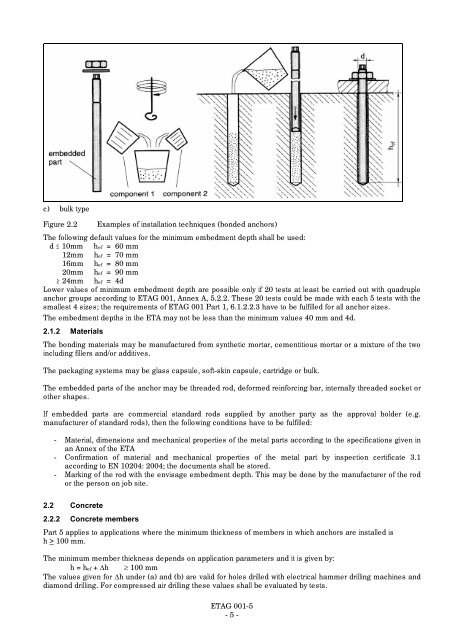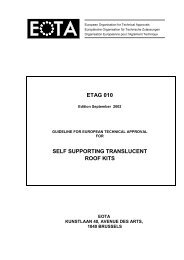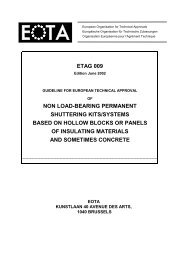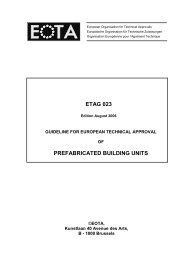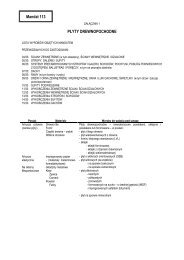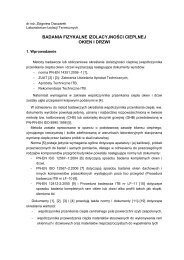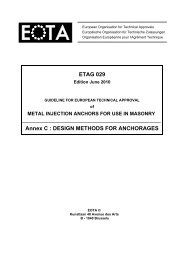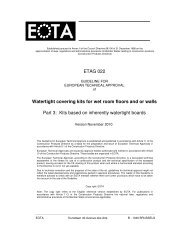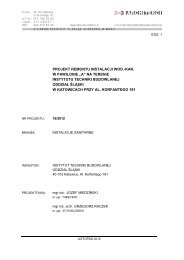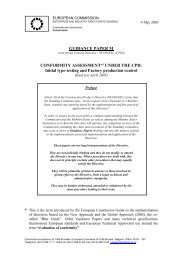ETAG 001
ETAG 001
ETAG 001
Create successful ePaper yourself
Turn your PDF publications into a flip-book with our unique Google optimized e-Paper software.
c) bulk typeFigure 2.2Examples of installation techniques (bonded anchors)The following default values for the minimum embedment depth shall be used:d ≤ 10mm hef = 60 mm12mm hef = 70 mm16mm hef = 80 mm20mm hef = 90 mm≥ 24mm hef = 4dLower values of minimum embedment depth are possible only if 20 tests at least be carried out with quadrupleanchor groups according to <strong>ETAG</strong> <strong>001</strong>, Annex A, 5.2.2. These 20 tests could be made with each 5 tests with thesmallest 4 sizes; the requirements of <strong>ETAG</strong> <strong>001</strong> Part 1, 6.1.2.2.3 have to be fulfilled for all anchor sizes.The embedment depths in the ETA may not be less than the minimum values 40 mm and 4d.2.1.2 MaterialsThe bonding materials may be manufactured from synthetic mortar, cementitious mortar or a mixture of the twoincluding fillers and/or additives.The packaging systems may be glass capsule, soft-skin capsule, cartridge or bulk.The embedded parts of the anchor may be threaded rod, deformed reinforcing bar, internally threaded socket orother shapes.If embedded parts are commercial standard rods supplied by another party as the approval holder (e.g.manufacturer of standard rods), then the following conditions have to be fulfilled:- Material, dimensions and mechanical properties of the metal parts according to the specifications given inan Annex of the ETA- Confirmation of material and mechanical properties of the metal part by inspection certificate 3.1according to EN 10204: 2004; the documents shall be stored.- Marking of the rod with the envisage embedment depth. This may be done by the manufacturer of the rodor the person on job site.2.2 Concrete2.2.2 Concrete membersPart 5 applies to applications where the minimum thickness of members in which anchors are installed ish > 100 mm.The minimum member thickness depends on application parameters and it is given by:h = hef + h 100 mmThe values given for h under (a) and (b) are valid for holes drilled with electrical hammer drilling machines anddiamond drilling. For compressed air drilling these values shall be evaluated by tests.<strong>ETAG</strong> <strong>001</strong>-5- 5 -


